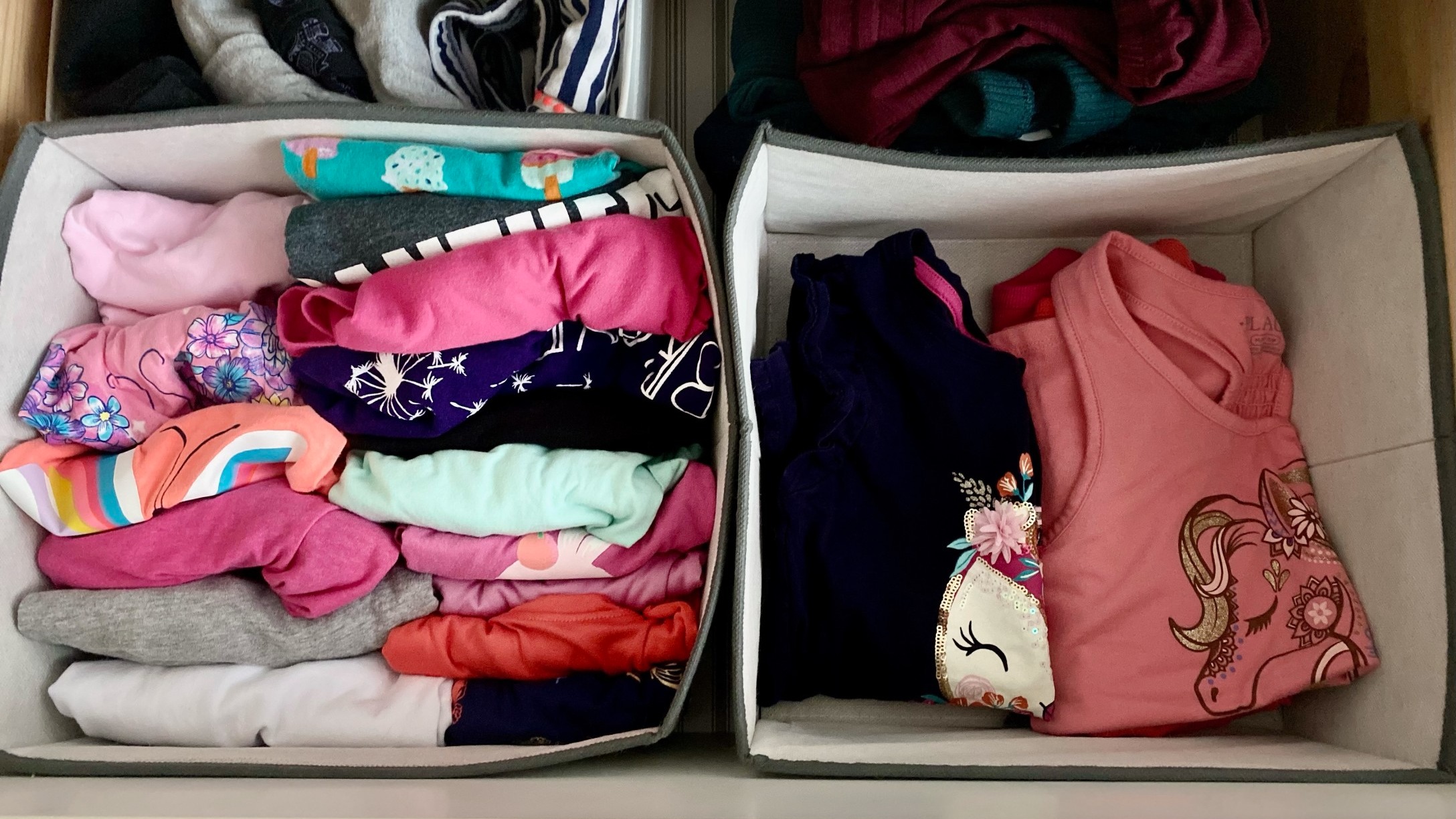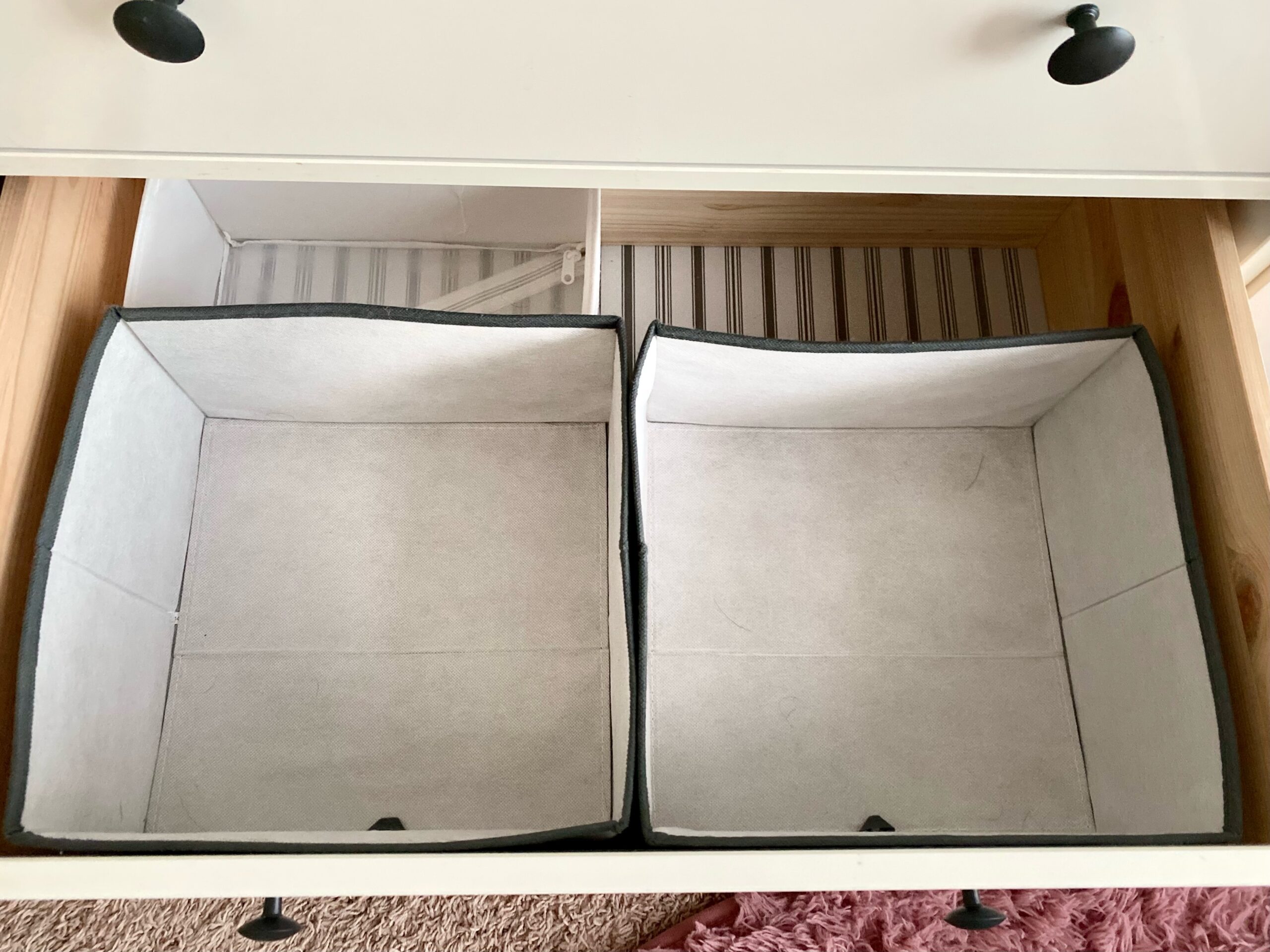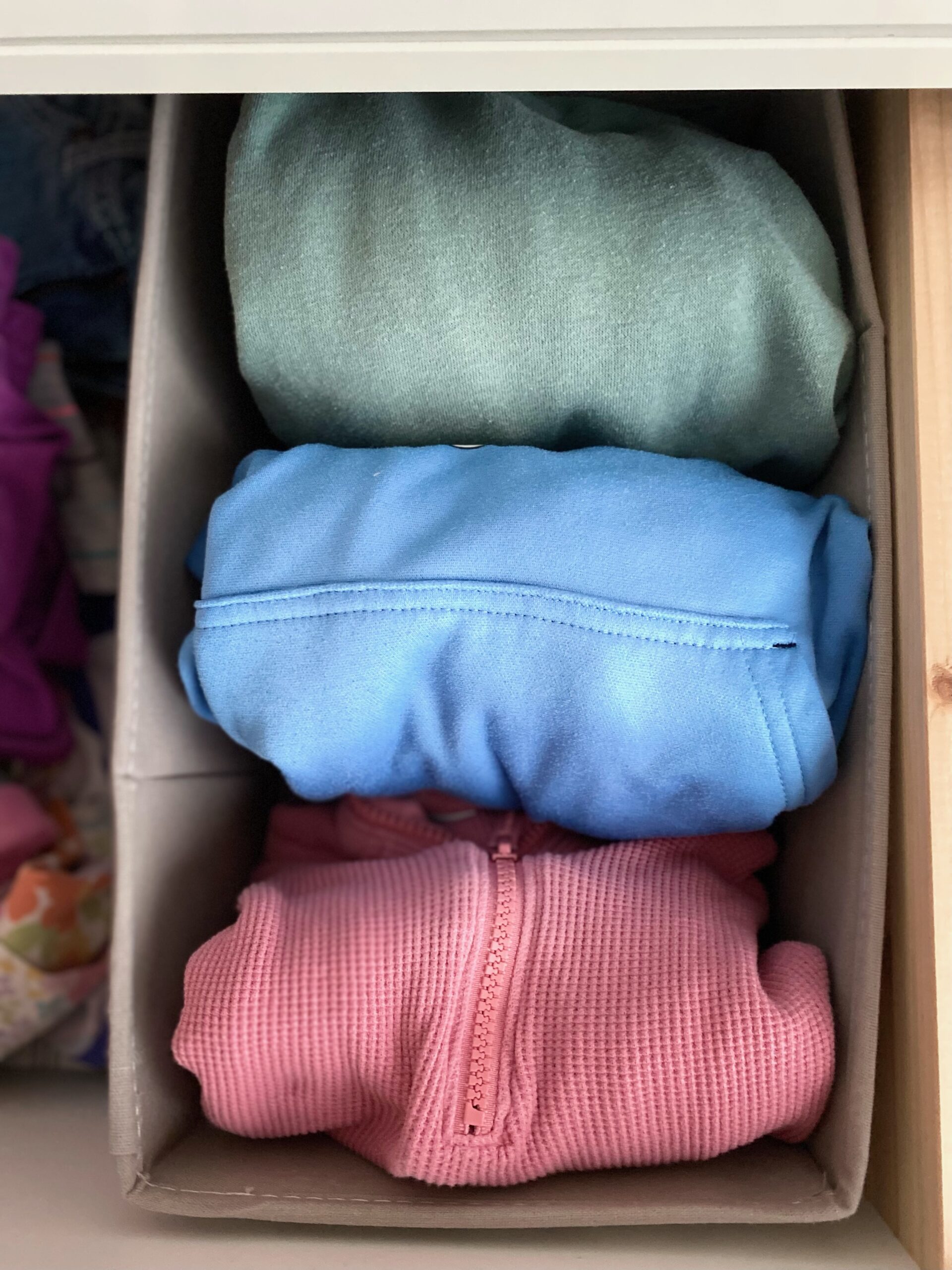
One of the many unseen tasks of being a parent is transitioning kids’ clothes between seasons. Even though it’s “invisible work,” this is an important task in maintaining a household. Do they have enough? Do they still have clothes that fit from last year? Have any mom friends passed on clothing to sort through?
Eventually, the kids can do this process themselves. Soon, they’ll be the ones telling you their shoes are tight or the pants from last summer are too small. Until then, we can simplify the transition of kids’ seasonal clothing in the best ways we know how. After all, someone has to make sure everyone has seasonally appropriate clothing that fits.
More from CafeMom: What to Do With Those Too-Small Baby Clothes?
First, dump everything out.
It’s easier to start with a totally clean slate. Or in this case, a totally empty dresser or closet, and then sort through. Start by making piles on the floor.
Categorize what you have already into three piles: donate/give away, sell, or keep for next year. With selling, you can list the item online or locally first. If you want the item out of your home in a certain time frame, you can leave the listing up for a set amount of time.
Keep a bin for outgrown clothing in each closet.

If you have an empty bin in each closet, you (or your child) can toss in clothes when they don’t fit anymore. Create a system. Know when you’ll get rid of it and figure out where it will go.
Will you purge, sell, or donate these items when the bin is full? Will you let your children put their outgrown clothing in it, or will only you have access to it? You don’t want another task that gets out of control. Make sure you have a system in place for any outgrown clothing you store or keep.
Shop a sibling's closet first.

Make sure you check siblings' outgrown clothing before buying new items. If a younger sibling can fit into an outgrown item, that’s less effort and money you have to spend on new clothes.
This can work even with different genders. Often, an older sibling will have some neutral items to pass on to a younger sibling.
Solid-colored T-shirts, sweatshirts, or even socks (in good condition), can be passed on to the next sibling. Passing down clothing from siblings saves money. It’s fun to see something an older sibling wore getting a second life. We want to see things we buy for our kids getting their full use, so be sure to set hand-me-downs aside before selling or purging!
More from CafeMom: 20 Closet Organizer Ideas for Every Closet In the House
Figure out when to store and when to purge.

Storing clothing that still fits at the end of the season is tricky. You don’t want to store excess clothing that takes up space when it’s not being worn. But you also don’t want to get rid of something that could still fit next year. Think about how likely it is the clothes will still fit next season.
Don't forget off-season gear.
Consider what you’ll do with coats, snow gear, and off-season shoes, too. Try buying gender neutral snow gear. Since kids usually wear these items less often, it doesn’t show as much wear as regular clothing. You can use it longer by passing it between siblings and then reselling it once you’re done. Don’t forget to check your bins if you’ve already bought this season's clothing from last year!
Try these tips for transitioning kids' clothing between seasons.

-
For girls, save some money by cutting old, worn-out leggings into shorts. This is fairly simple to do and they make excellent “bike shorts” to wear under dresses.
-
Most major stores will put out discounted clothing at the end of major seasons. While you don’t want to store things you’re not using, it could benefit you long-term. If you know (or can guess) what size your child might be the next time the weather is warm, keep an eye out. It could save you a bit later on.
-
Don’t put away all off-season clothing. It’s easy to jump ahead and store all sweatshirts or thicker pants at the first sign of warm weather. Consider setting aside one warmer sweatshirt and one pair of thicker pants, just in case. Keep these in a place your child can easily access while still being out of the way. You never know when you’ll travel somewhere cold or need a warmer sweatshirt for a chilly night.
-
Decide ahead of time if you will do this process with or without your child. Depending on their age, some kids won’t care that you’re doing this. Other kids may want to be involved.
-
Consider using this time as unconventional self-care. Yes, it’s a small parenting chore that needs to be done. But set aside some time to listen to an audiobook, make a special beverage, open some windows, or light a candle. Who says you can’t try to make the invisible, monotonous tasks of parenthood more enjoyable?



